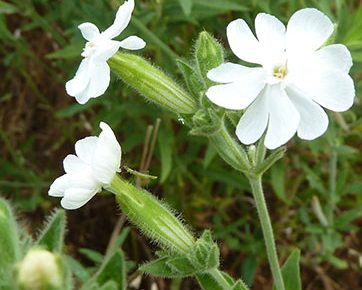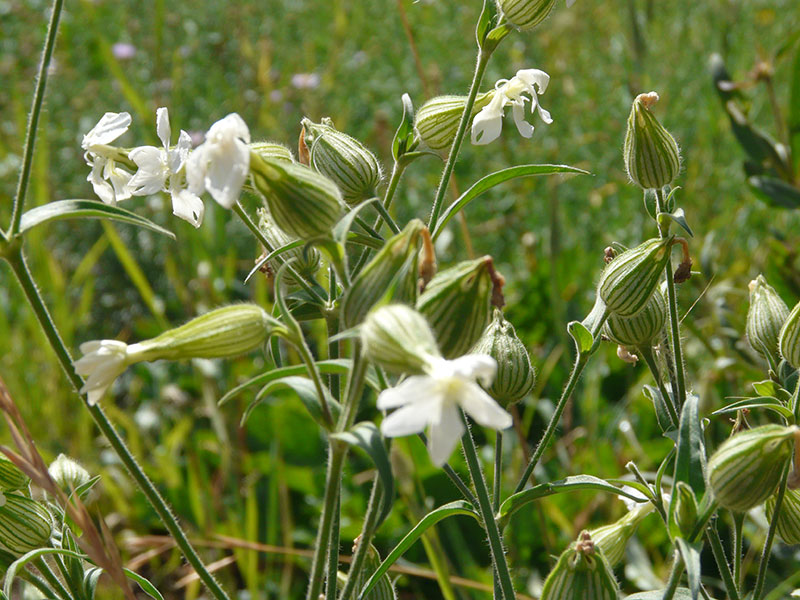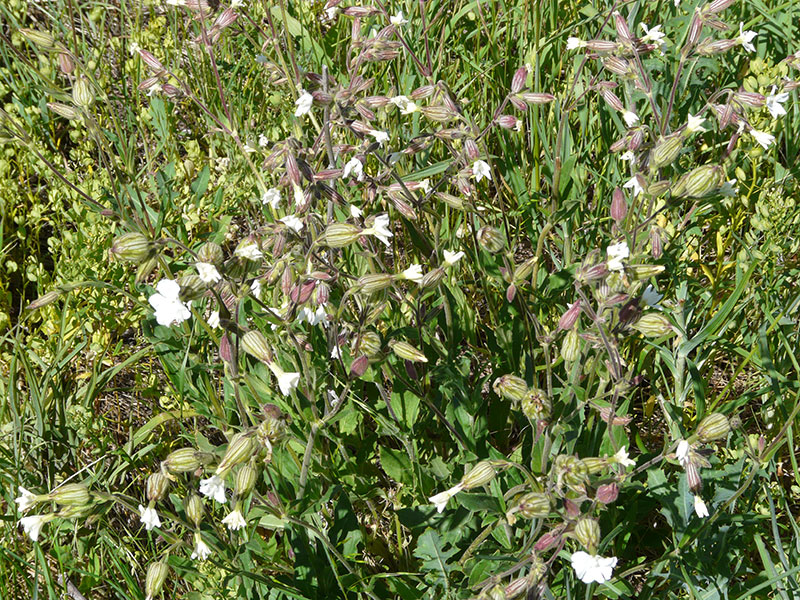Silene latifolia / white campion
- white, 5-petaled flowers with distinctive inflated calyx (bladder)
- flowers in clusters atop stems
- whole plant densely hairy
- widespread on alkaline soils (e.g. the Valley)
Also known as: bladder campion
The white, or bladder campion is immediately recognizable by its white flower with a bulbous “bladder” behind it. The bladder is actually a modified calyx, or collection of sepals. The bladder is green and white-ish striped. The plant is usually an annual, probably the general case here, and insect pollinated. Male and female flowers are on different plants, i.e. the species is dioecious, but the flowers look similar.
Despite the separation of sexes to different plants, it is possible, of course, for the plants to be siblings, i.e. to have developed from seed of a single mother plant. Thus, the offspring may be either male or female, and either outbred or inbred. Interestingly, outbred male offspring appear to be better fathers (producing more progeny) than inbred males. Inbred females, on the other hand have significantly reduced vegetative growth, and later age at first flowering. In both sexes, inbreeding leads to reduced number of offspring, or in Darwinian parlance, lower fitness. Even more interestingly, white campion also shows post-pollination selection. This means that embryos resulting from inbreeding develop more poorly than those resulting from outcrossing, or even not at all. [This is all documented here].
In practice, for wildflower viewers, this all makes little difference. You can enjoy the white campion throughout the Valley, especially on disturbed sites.
| Color | |
|---|---|
| Family | |
| Blossom size | |
| Inflorescence size | |
| When? | |
| Where? |




